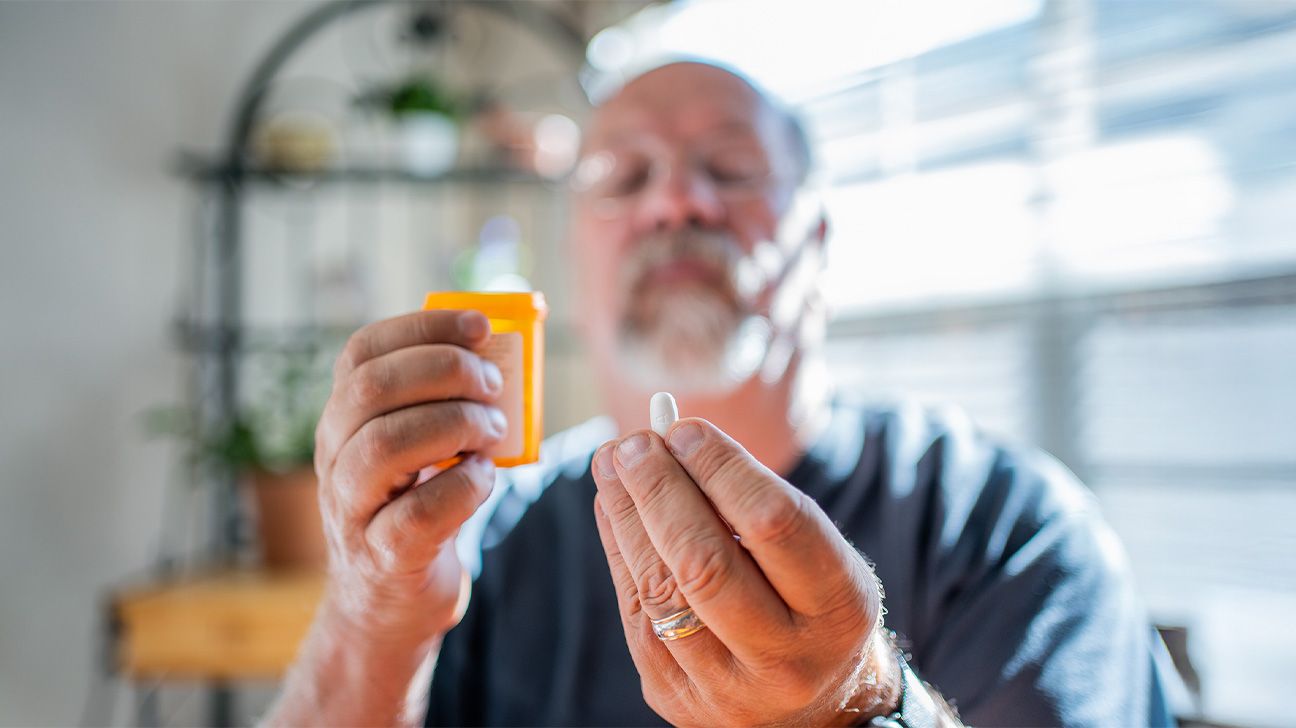Provigil (modafinil) is considered a Schedule IV controlled substance due to its small risk of potential abuse, dependence, or addiction. The drug is taken to treat excessive sleepiness caused by certain sleep disorders.
All known medications that have a risk of abuse or dependence are classified into one of five categories. The United States Drug Enforcement Administration (DEA) and Food and Drug Administration (FDA) classify these categories as controlled substances.
Within these
Provigil is a Schedule IV drug. This means that the risk of abuse with the drug is low. But a few cases have been reported in medical literature.
Note: While “misuse,” rather than “abuse,” is now commonly used, this article uses “abuse” to match the sources. Abuse is taking a drug in a way other than how a doctor prescribes it.
The United States government oversees the distribution of controlled substances to restrict their usage. All controlled substances require a prescription, but all prescription medications are not controlled substances.
The table below explains the
| Category | Examples | What to know |
|---|---|---|
| Schedule I: • highest risk of abuse • no medical use due to lacking safety data that the FDA accepts | • LSD • cannabis • heroin • mescaline (peyote) •methylenedioxymethamphetamine (MDMA) (often called molly or ecstasy) | • some are illegal or recreational • the classification of cannabis as a level I substance remains controversial • a hearing is planned in December 2024 to potentially reschedule cannabis from a Schedule I to Schedule III drug |
| Schedule II: high risk of abuse but less than with Schedule I drugs | • amphetamines • codeine • fentanyl • methadone • morphine • OxyContin (oxycodone) | • considered dangerous • symptoms of abuse might include vomiting, nausea, seizure, or hallucinations • high risk of physical and mental dependence |
| Schedule III: less risk of abuse than with Schedule I and II drugs | • anabolic steroids • products containing less than 90 milligrams (mg) of codeine per dosage unit (such as Tylenol with codeine) • testosterone • Marinol (synthetic cannabis) • Subutex (buprenorphine) • Fiorinal (aspirin, butalbital, caffeine) | • risk of moderate to low physical dependence, or • risk of high mental dependence |
| Schedule IV: less risk of abuse than with Schedule I, II, and II drugs (including Provigil) | • Provigil (modafinil) • benzodiazepines • phenobarbital • Ambien (zolpidem tartrate) • Lunesta (eszopiclone) • Sonata (zaleplon) | • low risk of abuse • low risk of physical or mental dependence • risk of addiction • typically used for treating anxiety and seizure |
| Schedule V: least risk of abuse | • cough products with less than 200 mg per 100 milliliters (mL) of codeine • Lomotil (diphenoxylate/atropine) • Motofen (difenoxin and atropine sulfate) • Lyrica (pregabalin) • Parepectolin (attapulgite) | • drugs containing limited quantities of narcotics • generally used to treat diarrhea, pain, or coughing |

Provigil is a Schedule IV controlled substance, which is defined as having a low risk of physical or mental dependence and a low risk of abuse. Despite Provigil having a low risk of abuse, rare cases of addiction have been recorded in medical literature. (Remember, with addiction, a drug is used even if it’s causing harmful outcomes.) It’s important to note that these cases involved the use of modafinil, which is a generic version of Provigil.
A 2018 publication notes that a 24-year-old person from Turkey developed dependence with the use of modafinil. This person had been taking high doses of modafinil to treat attention deficit hyperactivity disorder (ADHD). When not taking the drug, they developed:
- irritability
- anxiousness
- sleep problems
- fatigue
- unpleasant vivid dreams
A 2015 publication also notes dependence in a 44-year-old person from India, which was also with the use of modafinil. This person also took antipsychotics to treat psychiatric symptoms that developed following the death of their parent.
Provigil is a type of stimulant known as a nonamphetamine. Stimulants are medications that increase CNS activity in your body and increase alertness. (The CNS includes your brain and spinal cord.)
The way Provigil works in your brain isn’t well understood.
Is modafinil a narcotic?
Modafinil is not a narcotic. Narcotics are drugs that affect your mood or behavior. People take them for nonmedical reasons, and often they’re sold illegally. The best-known example might be heroin, including products made from it.
Provigil is a Schedule IV controlled substance. As such, healthcare professionals consider it to have a low risk of abuse and a low risk of physical or mental dependence. While Provigil has a low risk of abuse, rare cases of addiction have been recorded in medical literature. But these cases involved the use of modafinil, which is a generic version of Provigil.
Before taking Provigil, it’s a good idea to talk with your doctor about potential side effects and risks. They can best advise you about these and the benefits of Provigil to treat your condition.
Disclaimer: Healthline has made every effort to make certain that all information is factually correct, comprehensive, and up to date. However, this article should not be used as a substitute for the knowledge and expertise of a licensed healthcare professional. You should always consult your doctor or another healthcare professional before taking any medication. The drug information contained herein is subject to change and is not intended to cover all possible uses, directions, precautions, warnings, drug interactions, allergic reactions, or adverse effects. The absence of warnings or other information for a given drug does not indicate that the drug or drug combination is safe, effective, or appropriate for all patients or all specific uses.




